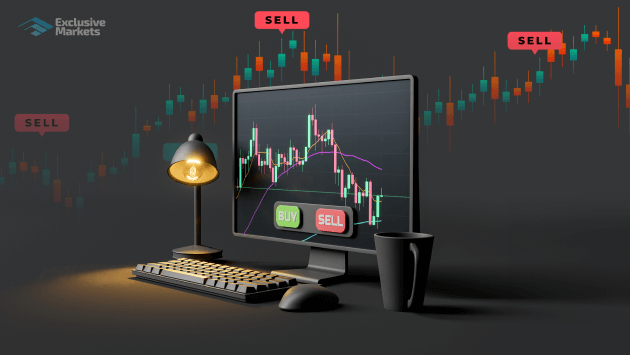
Forex trading is a dynamic and fast-paced environment that offers immense opportunities for traders looking to capitalize on currency fluctuations. To successfully navigate this landscape, it’s crucial to develop a solid framework that adheres to professional guidelines. This article outlines the central tenets of a Forex trading framework and offers strategic insights for both novice and experienced traders. For a deeper understanding of effective trading strategies, you can visit forex trading framework professional guidelines forex-level.com.
Understanding the Forex Market
The Forex market, or foreign exchange market, is the largest financial market in the world, with a daily trading volume exceeding $6 trillion. Unlike stock markets, which operate on centralized exchanges, Forex trading takes place over-the-counter (OTC) through a global network of banks and brokers. Understanding the fundamentals of this market, including currency pairs, market participants, and trading hours, is essential for developing an effective trading framework.
Building Your Forex Trading Framework
A well-defined trading framework serves as a foundation for making informed trading decisions. Here are key components to consider when building your framework:
1. Define Your Trading Goals
Establish clear and realistic trading goals. Consider factors such as risk tolerance, time commitment, and desired returns. Goals might include achieving a specific percentage return on investment (ROI) or consistently achieving profitable trades over a defined period.
2. Develop a Trading Plan
Your trading plan should outline your strategy for entering and exiting trades, including criteria for selecting currency pairs, interval charts, and indicators. Key elements of your trading plan include:
- Market Analysis: Utilize both technical and fundamental analysis to inform your decisions.
- Risk Management: Implement mechanisms to protect your capital, such as stop-loss orders and position sizing.
- Trading Schedule: Establish a routine for analyzing the market, executing trades, and reviewing performance.
3. Choose a Reliable Forex Broker
Choosing the right broker is critical for successful trading. Look for brokers that are regulated, offer competitive spreads, robust trading platforms, and quality customer service. It’s essential to review their transaction fees and withdrawal policies as well.
4. Implement Risk Management Strategies
Risk management is crucial in Forex trading to preserve your capital and mitigate losses. Some strategies include:
- Position Sizing: Determine the size of your trades based on your overall account balance and risk tolerance.
- Setting Stop-Loss Orders: Automatically exit a trade at a predetermined loss level to limit potential losses.
- Diversification: Avoid concentrating your portfolio in a few currency pairs to reduce overall risk.
5. Continuous Learning and Adaptation
The Forex market is ever-evolving, requiring traders to stay informed and adaptable. Engage in ongoing education through webinars, books, and trading courses. Follow market news and analyze economic indicators that impact currency fluctuations.

Common Trading Strategies
Within the Forex trading framework, various strategies are employed based on trader preferences and market conditions. Here are some common strategies:
1. Scalping
Scalping involves making numerous trades throughout the day to capture small price movements. Traders focus on high liquidity and tight spreads to maximize their gains. This strategy requires quick decision-making and a lot of time spent monitoring the market.
2. Day Trading
Day trading entails opening and closing trades within the same trading day. This strategy prevents exposure to overnight risk and relies on short-term market movements. Traders typically use technical analysis and short-term price patterns.
3. Swing Trading
Swing trading aims to capture price swings over several days or weeks. Traders leverage technical indicators to identify potential reversal points and enter trades accordingly, allowing for more extensive price movements than day trading.
4. Position Trading
Position trading is a long-term strategy where traders hold positions for weeks, months, or even years. This strategy relies heavily on fundamental analysis and broader economic indicators rather than short-term market fluctuations.
Measuring Performance
To assess the effectiveness of your Forex trading framework, it’s essential to measure your performance regularly. Key metrics include:
- Win Rate: The percentage of profitable trades compared to total trades executed.
- Risk-to-Reward Ratio: The average profit of winning trades divided by the average loss of losing trades.
- Drawdown: The maximum decline in account balance from a peak to a trough and how well you recover afterwards.
Tracking these metrics will help you identify strengths and weaknesses in your trading strategy, allowing for ongoing improvements.
Conclusion
Creating a Forex trading framework based on professional guidelines is essential for achieving long-term success in the Forex market. By defining your goals, developing a structured trading plan, employing risk management strategies, and continuously learning, you can navigate the complexities of Forex trading with greater confidence. Remember, consistent profit generation takes time and dedication, so be patient as you refine your approach and adapt to market changes.
By adhering to these guidelines and leveraging resources like forex-level.com, you can enhance your trading proficiency and build a foundation for your Forex trading journey.
